Art World
Want to Get the Most Out of an Artist Residency? Here Are 7 Simple Tips
Apply far and wide, and other advice from residency veterans.
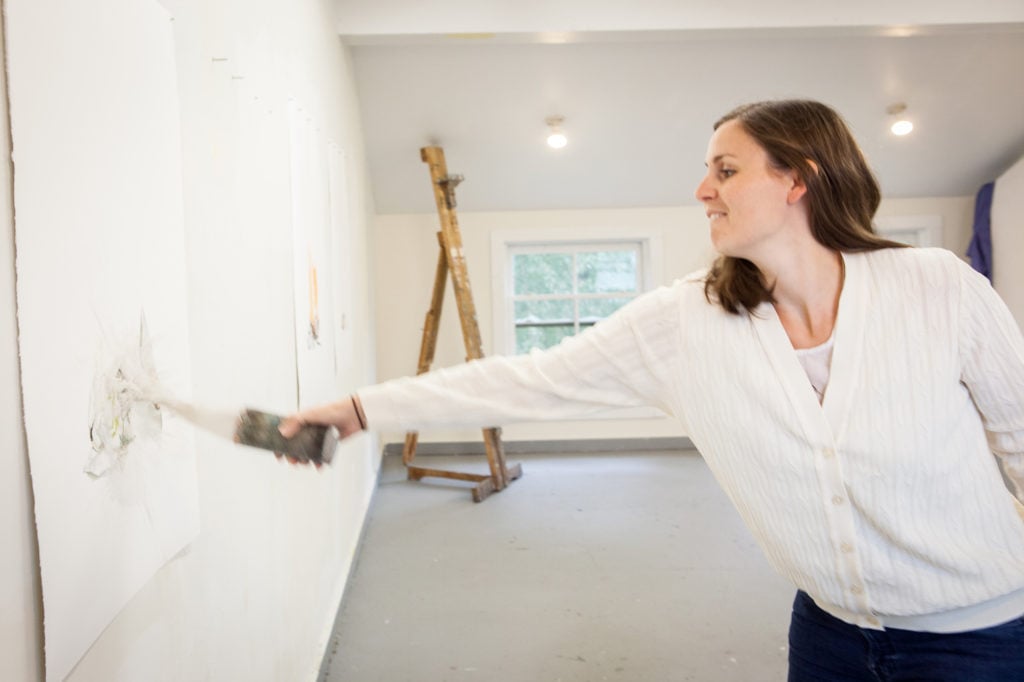
Apply far and wide, and other advice from residency veterans.

Andrew Nunes

There are residencies for artists of all kinds, at all stages in their careers. You can do one in an airport, in a shipping container, or in a remote tree house in the Scottish Highlands. But wherever you are and however long you are there, you’ll want to make the most of your experience. We spoke to a variety of experts, including residency organizers and artists who are residency veterans, about how to maximize this time-honored professional opportunity. Before you head out, here are seven tips to remember.
Some elite residencies can be tougher to get into than an Ivy League school. But you can increase your chances by applying to a large number of programs. Artist Sean Fader, who has completed residencies at the Wassaic Project in upstate New York and GlogauAIR in Berlin, recommends residency-curious artists apply to no fewer than 30 programs a year.
And if at first you don’t succeed, don’t be afraid to try again. “I applied for the residency at the Bemis Center for Contemporary Arts five times before I got in,” Fader says. When the program manager called to tell him the good news, Fader says she told him, “‘We’ve been watching you for years and every year you’ve been closer and closer to being a finalist. We are really excited to finally have you here.’” Fader is currently on his 14th application to another coveted residency. “I’ve got nothing to lose,” he says.
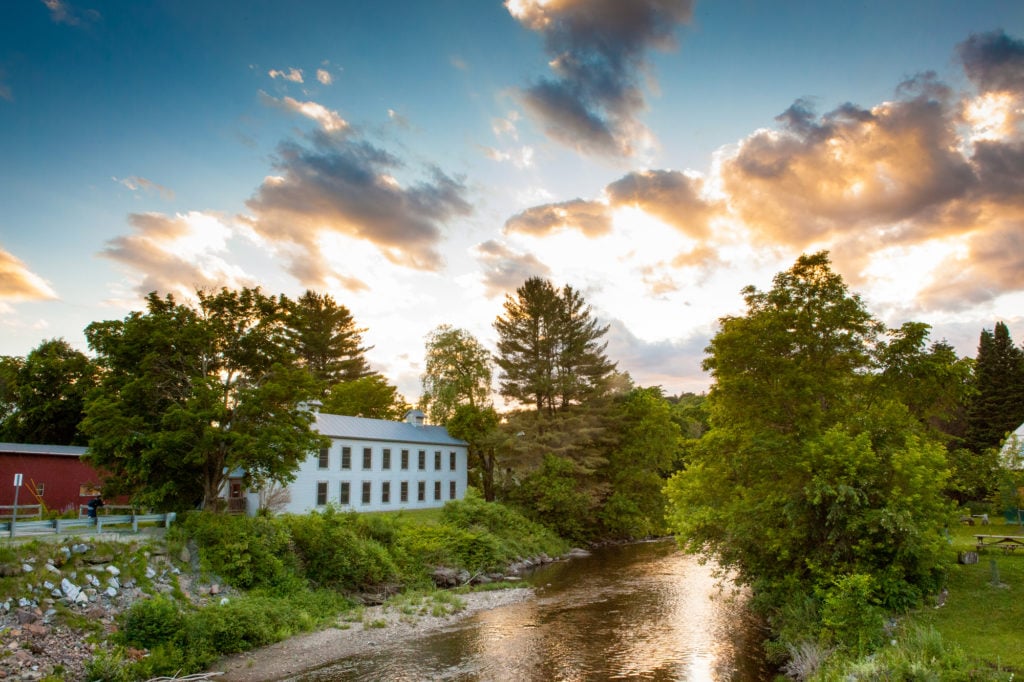
The Maverick Studios on the campus of the Vermont Studio Center. Image courtesy of the Vermont Studio Center.
Certain programs are particularly well suited to artists who are fresh out of undergrad (or did not attend an art program at all). If you don’t have a lengthy CV to submit, consider residencies that place a premium on your portfolio rather than recommendations or concrete proposals. The Vermont Studio Center, the largest international artists’ and writers’ residency in the US, falls into this category. “Our acceptance is driven on a review of the work,” program director Kathy Black explains. “It doesn’t matter where you are in in your career, whether you are just out of school or are just returning to a studio practice after a hiatus, or even deep into your practice. Those things don’t restrict your ability to put together a strong portfolio, and if you do so, you are going to be well-reviewed by the jury.”
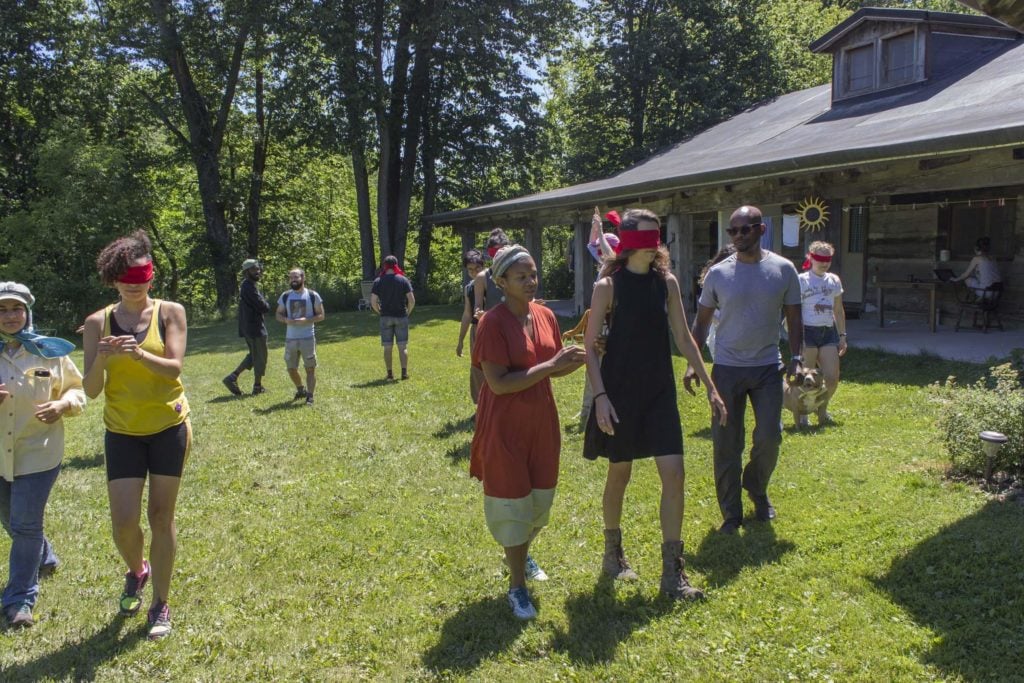
Performance workshop led by visiting artist Jefferson Pinder in July 2016. Courtesy of ACRE Residency Lodge, Steuben WI.
A successful residency “should not be defined or measured by productivity alone, but rather on one’s growth,” says artist Kenneth Tam, who will soon take up residence at the 18th Street Art Center in Santa Monica. “Even if an artist produces nothing tangible, if you were able to spend each day just thinking about your work, that could be a residency well spent.”
Lisi Raskin, an artist and head of the sculpture department at the Rhode Island School of Design, says her philosophy on residencies was forever altered after she learned that an artist friend had spent his entire nine-week residency at Skowhegan—one of the world’s top programs—doing nothing other than reading. “It shows that it’s important to really attend to what an artist might be needing when getting the opportunity to go on a residency, rather than attending to the external expectations they believe are there,” she says.
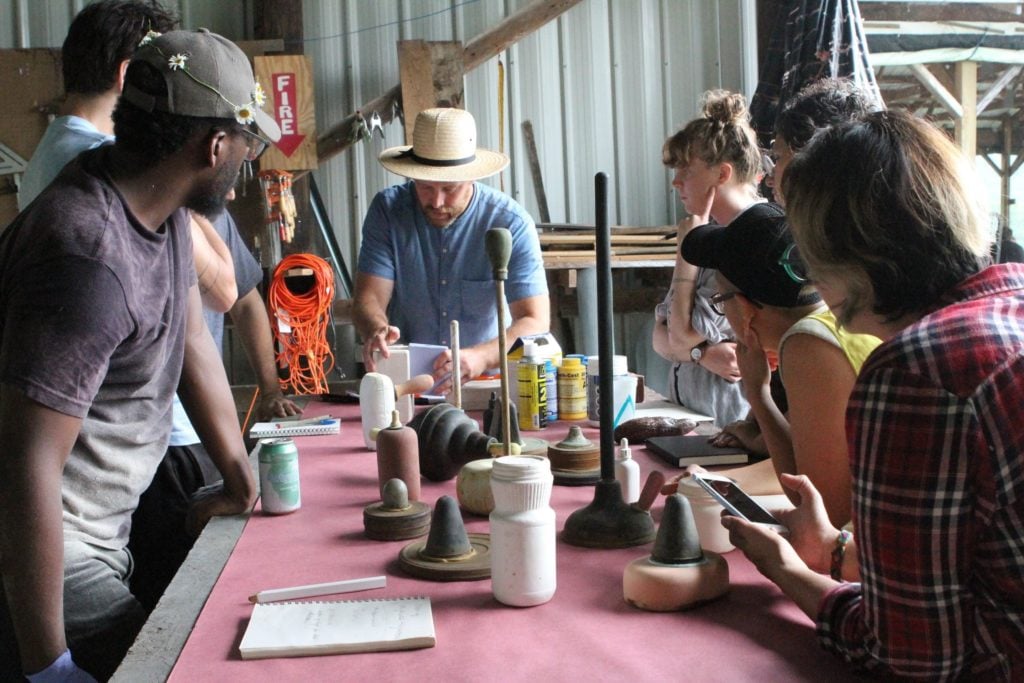
A workshop at ACRE Residency (2017). Courtesy of ACRE Residency Program.
Some say that planting the seeds for a project to complete upon returning home can be even more transformative than churning out a new body of work during the residency itself. “There’s a real value to going home from a residency with something incomplete,” says Vermont Studio Center’s Kathy Black. “You’ll move directly into your creative practice and everyday life with a task in front of you that you are really driven by, smoothing the transition to your home studio knowing exactly what you are going to work on.”
By contrast, Sara Black, an artist and assistant professor of sculpture at the School of the Art Institute in Chicago, says that self-imposed pressure during a residency can derail productivity quickly. “There is no right way to do a residency,” she maintains.
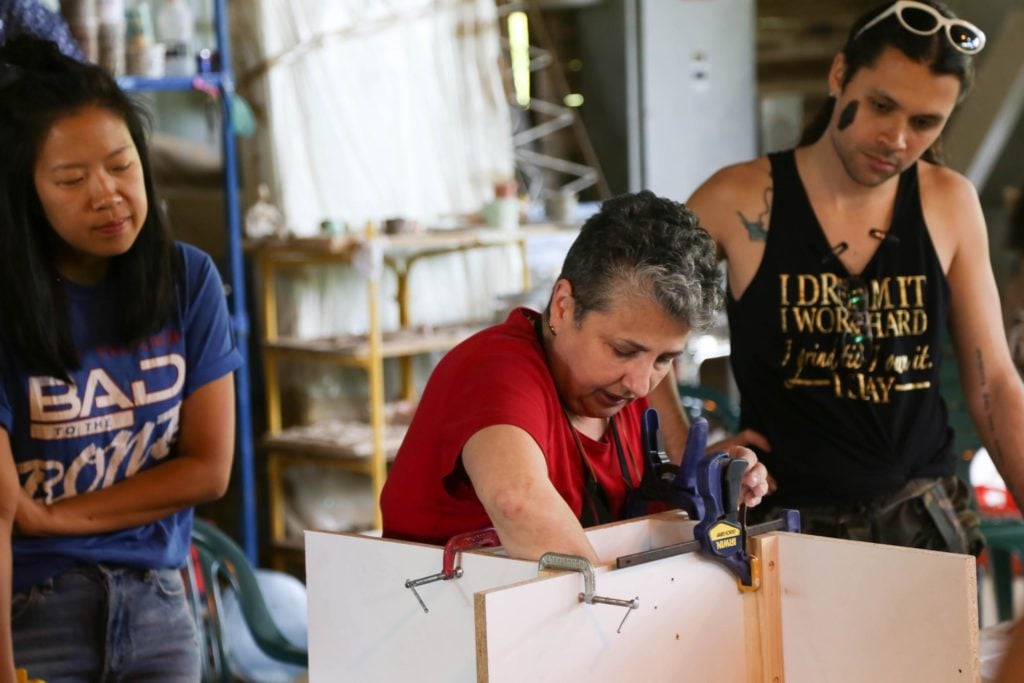
A workshop at the Residency. Courtesy of ACRE Residency, Steuben, WI.
Due to the limited duration of some residencies, planning can be key. Is there a print shop you’re dying to use? A member on the selection committee you want to meet? Equipment you want to try out? It’s a good idea to familiarize yourself with the program’s offerings in advance, says artist Dimitris Rentoumis, an alumnus of residencies including Kaus Australis in Rotterdam and Jan van Eyck Academie in Maastricht.
At the same time, over-planning is the quickest shortcut to an unsuccessful residency. “I’ve seen a lot of artists come with a very specific plan, who then get tripped up when their plan isn’t suited to the environment or facilities we have to offer,” explains Emily Green, the executive director of the ACRE Residency Program outside of Steuben, Wisconsin. “Be ready to adjust and try new things.”
Rentoumis agrees. “Bad or unsuccessful residencies are possible, just like having a bad job, boring studies, or a failed relationship,” he says. To set yourself up for success, you must be prepared to face “situations very different from what you had initially imagined.”
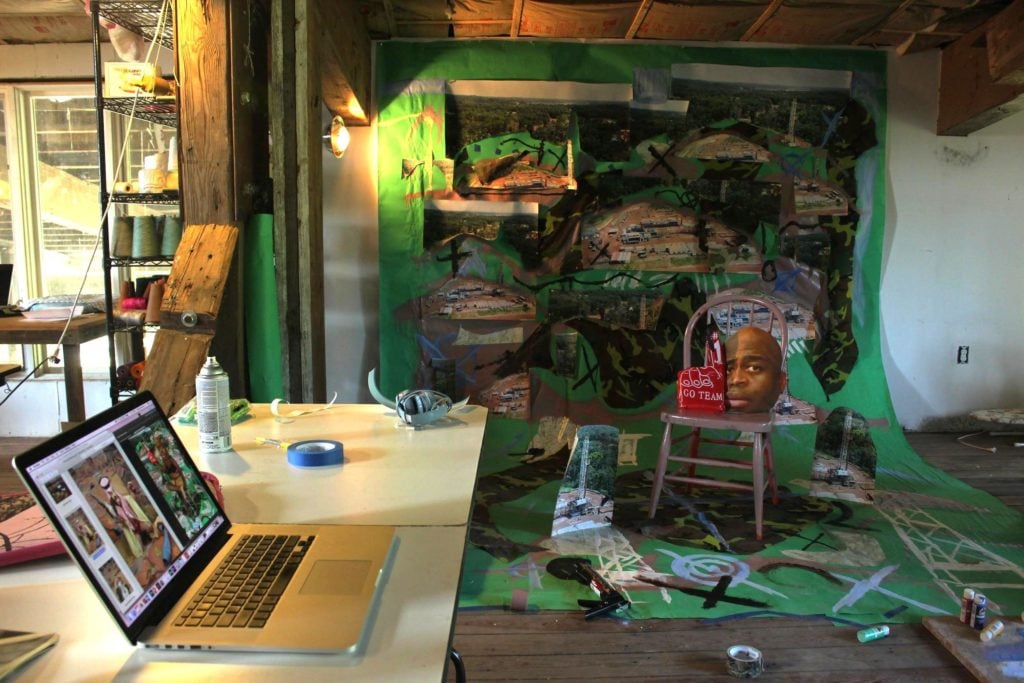
Resident Sheida Soleimani’s photo backdrop in a shared studio space, Chalet Building (July 2017). Courtesy of ACRE Residency, Steuben, WI.
As much as artists may complain about brutal “crits” during school, many find themselves longing for feedback after they leave their BFA or MFA programs. “Certain kinds of residencies are like an extension of graduate school: You have artists looking at your work regularly and engaging the work with critical discourse,” says artist Sara Black. “This can be a nice kind of transitional period before the quiet one many experience when working outside of institutional circumstance.”

The dining area at ACRE. Courtesy of ACRE Residency, Steuben, WI.
If you’re lucky (and open to it), you might even come out of a residency with new lifelong friendships. Some programs, like the Vermont Studio Center and ACRE, offer fixed meal times to encourage participants to mingle. “Our philosophy is that your peer artists are as valuable a resource as any,” Emily Green of ACRE explains. “Developing relationships with fellow residents can lead to many opportunities after the residency is over, whether it’s finding collaborators, or connections for jobs, or discovering new opportunities.”
Kathy Black of the Vermont Studio Center notes that the network that emerges from a residency can be among the longest-lasting benefits of the program. “Many [artists] become part of a real creative community that they carry with themselves once they leave,” she says. “It’s sort of the surprise of the residency.”